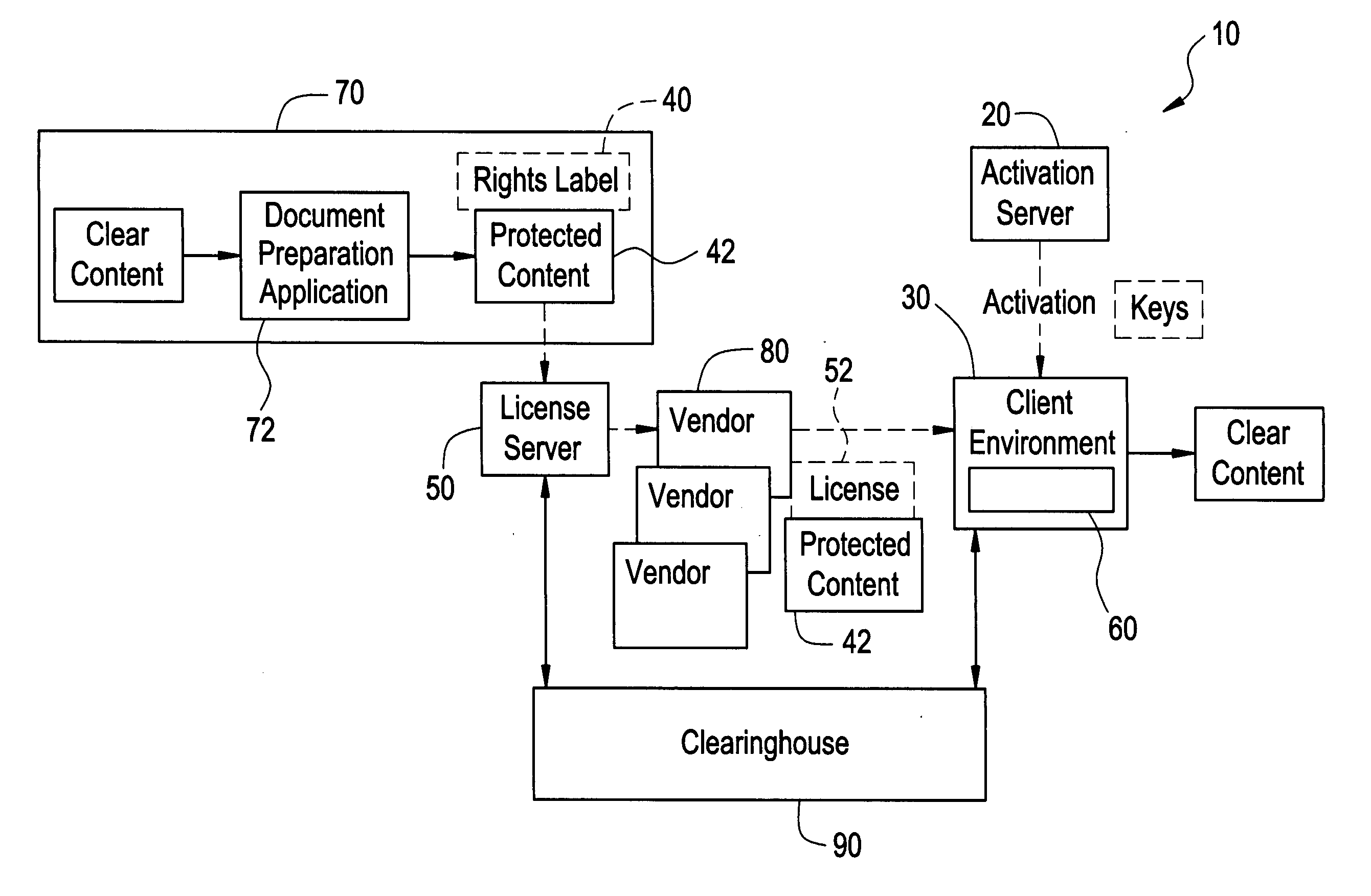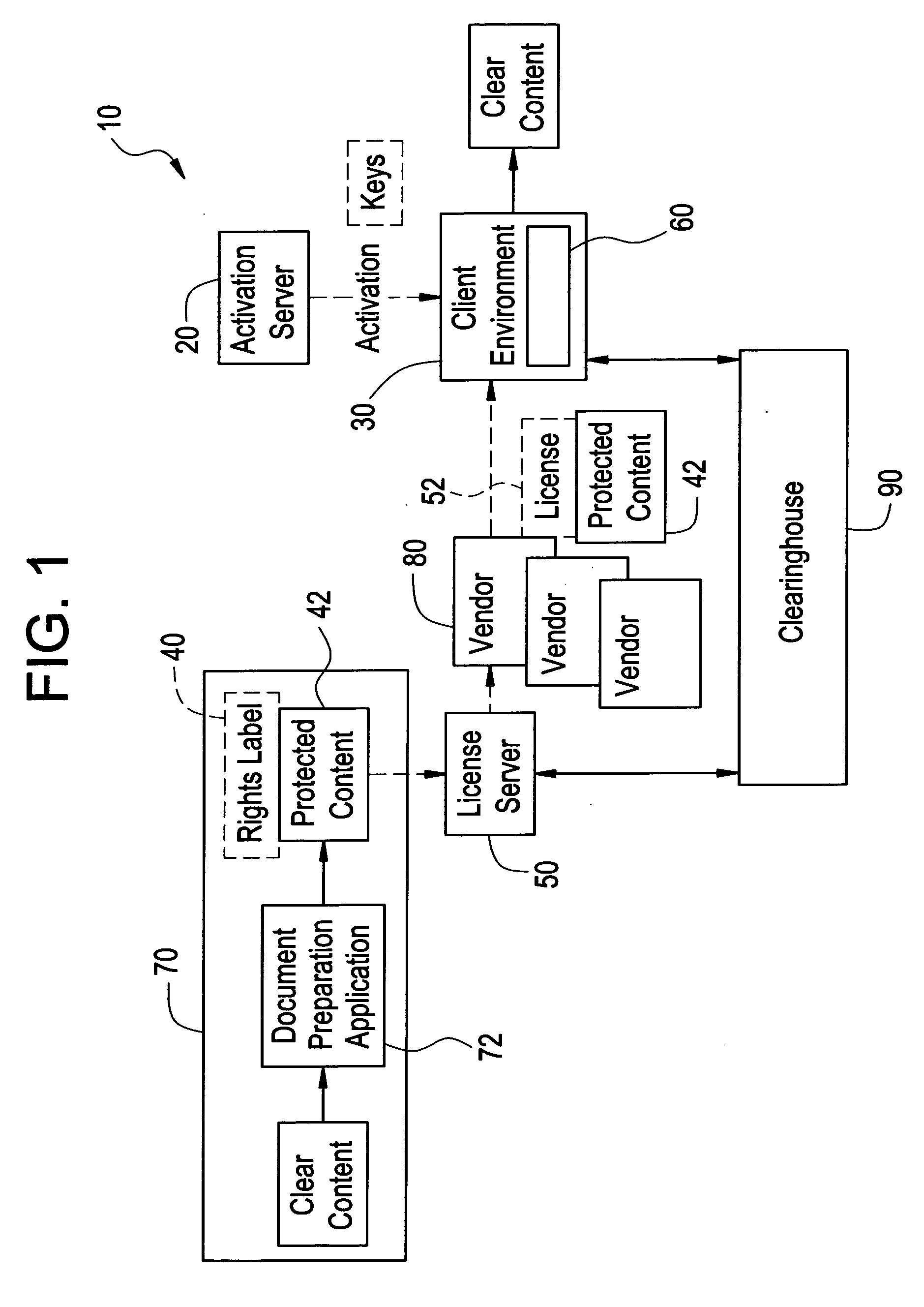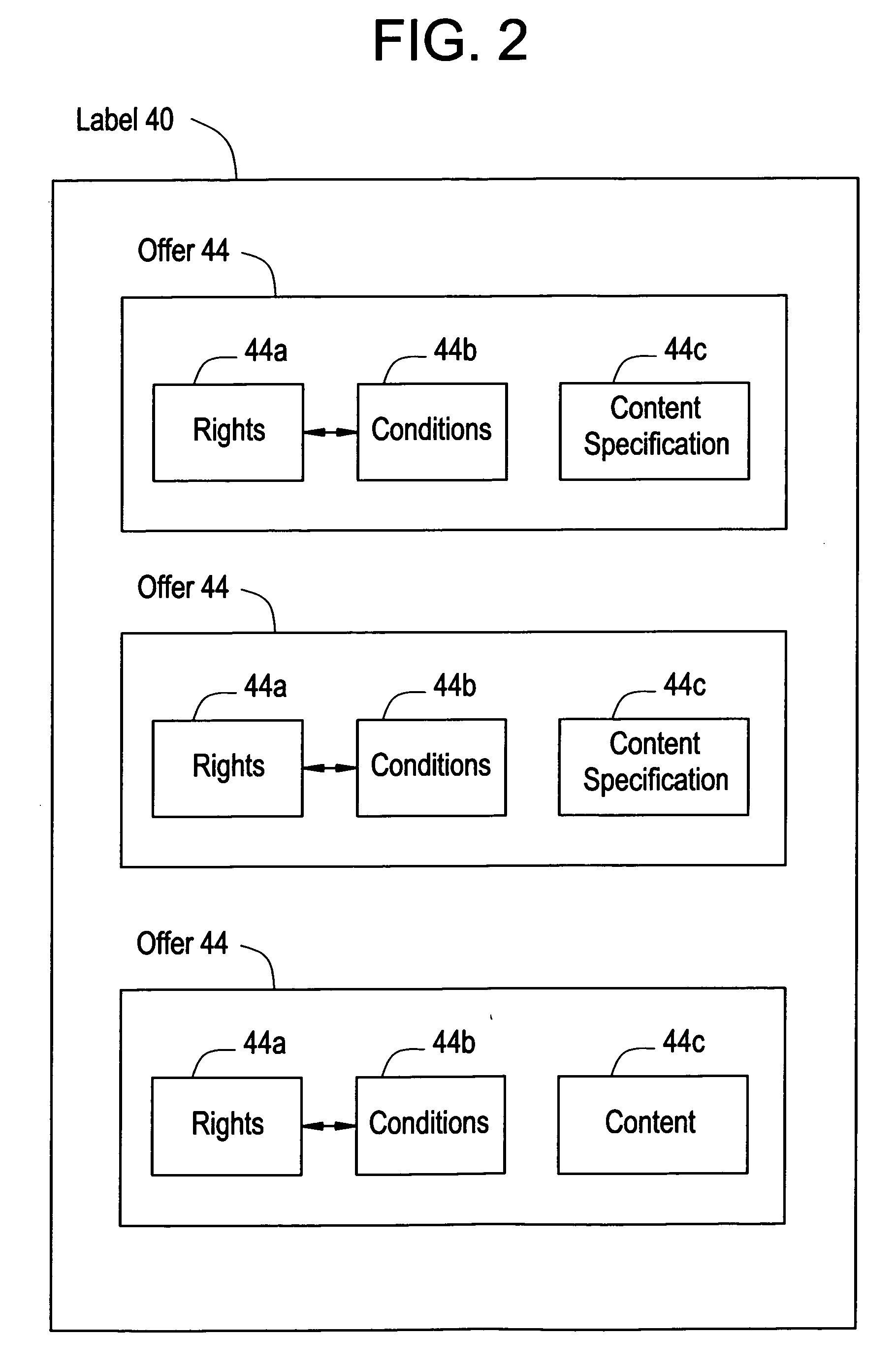Protected content distribution system
a content distribution system and content technology, applied in the field of digital rights management systems, can solve the problems of affecting the ability of content owners to enforce intellectual property rights during the distribution and use of digital works, affecting the quality of digital works, and being difficult to prevent, or even deter, people from making unauthorized copies of electronic works within current general-purpose computing and communication systems
- Summary
- Abstract
- Description
- Claims
- Application Information
AI Technical Summary
Benefits of technology
Problems solved by technology
Method used
Image
Examples
Embodiment Construction
[0020] A DRM system can be utilized to specify and enforce usage rights for specific content or other items. FIG. 1 illustrates a DRM system 10 that can be used to distribute digital content. DRM system 10 includes a user activation device, in the form of activation server 20, that issues public and private key pairs to content users in a protected fashion, as is well known. Typically, when a user goes through an activation process, some information is exchanged between activation server 20 and client environment 30, and client component 60 is downloaded and installed in client environment 30. Client component 60 serves as a security component and preferably is tamper resistant and contains the set of public and private keys issued by activation server 20 as well as other components such as any necessary engine for parsing or rendering protected content 42.
[0021] Rights label 40 is associated with protected content 42 and specifies usage rights that are available to an end-user whe...
PUM
 Login to View More
Login to View More Abstract
Description
Claims
Application Information
 Login to View More
Login to View More - R&D
- Intellectual Property
- Life Sciences
- Materials
- Tech Scout
- Unparalleled Data Quality
- Higher Quality Content
- 60% Fewer Hallucinations
Browse by: Latest US Patents, China's latest patents, Technical Efficacy Thesaurus, Application Domain, Technology Topic, Popular Technical Reports.
© 2025 PatSnap. All rights reserved.Legal|Privacy policy|Modern Slavery Act Transparency Statement|Sitemap|About US| Contact US: help@patsnap.com



